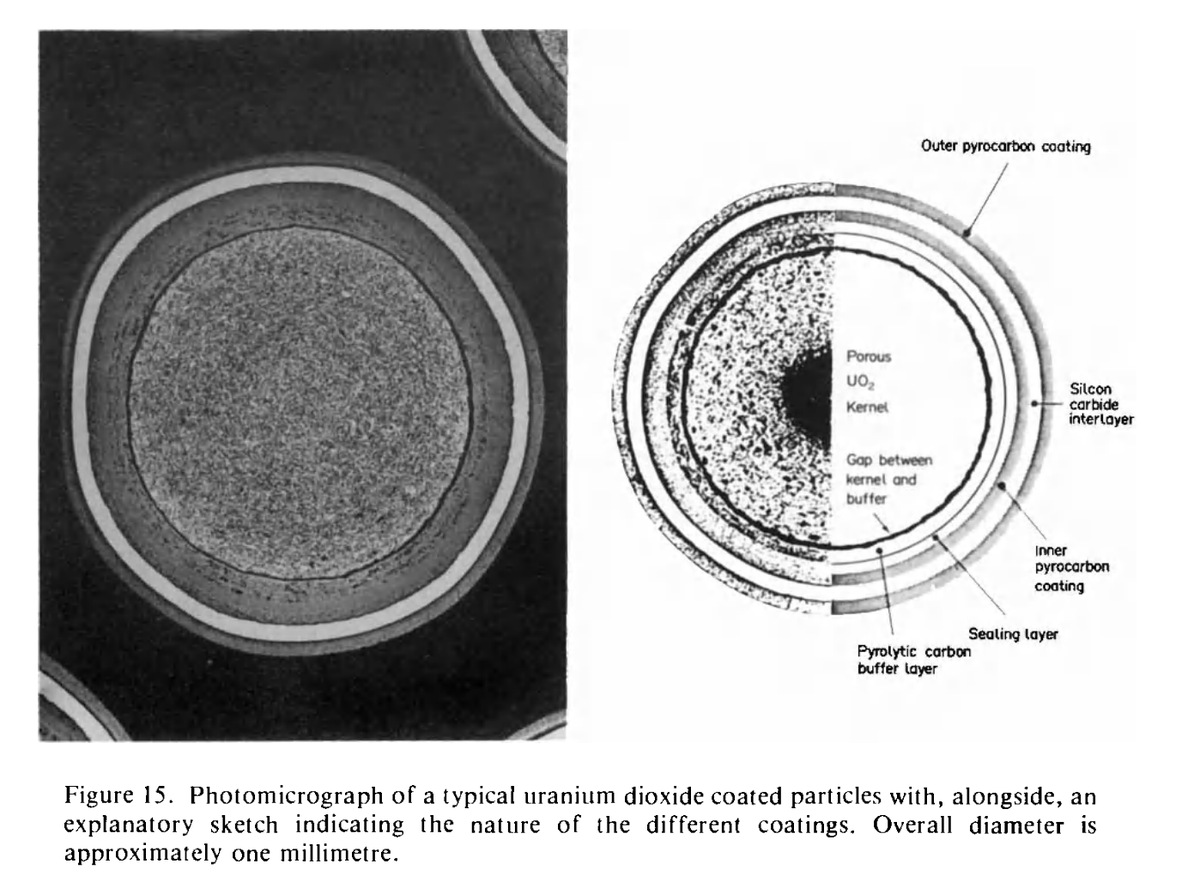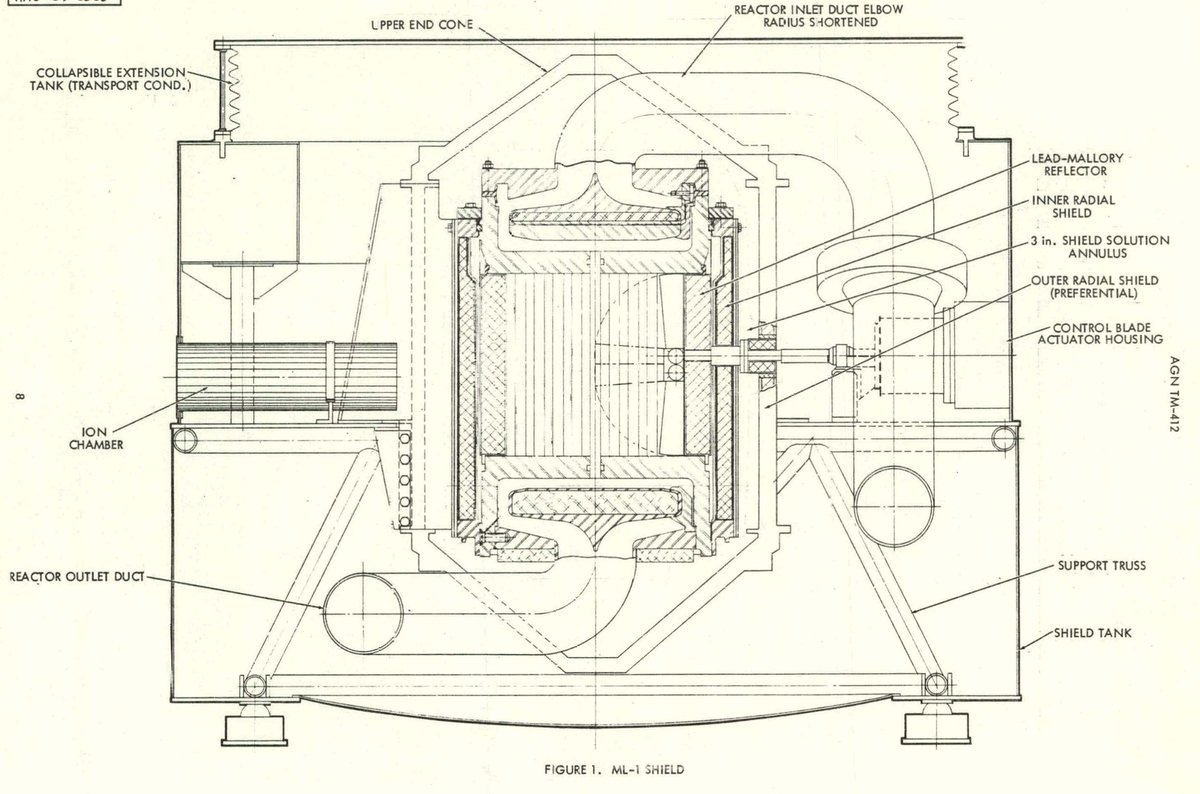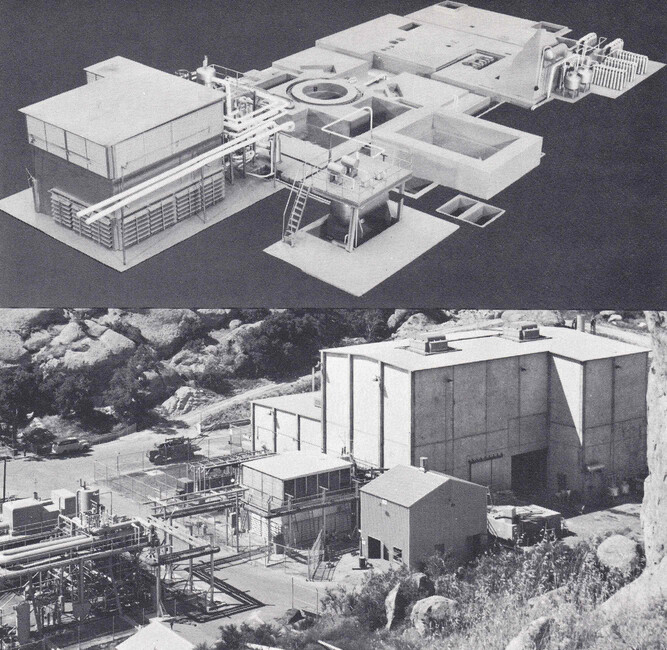Do you prefer advanced nuclear reactor designs because they’re newer and better than the old-fashioned ones that make up today’s fleet? Then buckle up, you’re in for a surprise! A 🧵 on the weird way that advanced nuclear today is actually a “Back to the Past” story... 

High temperature gas-cooled reactors were first conceived in 1944, and then developed by the Europeans in a multinational collaboration that resulted in the Dragon reactor in the UK. It went critical in 1964. This program developed the beloved coated microsphere fuel (TRISO) and everything. Many other HTGRs followed, such ML-1, Peach Bottom, AVR, Ft. St. Vrain, THTR-300. Today, the HTTR, HTR-10, HTR-PM are all operational outside the US (Japan and China). China has 2 6-packs of them under construction.



Liquid metal cooled reactors are even older. The first (substantial) electricity was produced by the sodium-potassium eutectic cooled EBR-1 (aka "Zinn's infernal pile") in 1951! After that, the world built about 25 sodium-cooled fast reactors, 3 sodium-cooled/graphite ones, and about 10 lead-cooled beryllium moderated naval reactors. China, Russia, and India have operational sodium-cooled reactors today, and Japan is working to turn its JOYO back on.



Molten salt reactors? These were first developed to power a nuclear-powered aircraft for the US Air Force. The first one, the Aircraft Reactor Experiment, ran for 5 days way back in 1954. It had molten salt fuel/coolant running in tubes and was moderated by an amazing (far superior to graphite, but also more expensive) moderator called Beryllium Oxide.



Small modular light-water reactors? The PM-1 military microreactor was built in a factory and delivered to site by aircraft in 1962. It didn’t require an environmental water supply. Similar microreactors were delivered and operated under the ice in Greenland, in Antarctica, in Alaska, in Virginia, and floating in the Panama Canal.
x.com/whatisnuclear/…
x.com/whatisnuclear/…
Dozens of even more exotic and high performance reactors were built as well, like the insane HTREs, UHTREX, NERVA, LAMPRE, etc. We had organic-cooled reactors. We operated reactors on flying aircraft (the ASTR) and in space (SNAP-10A). The current fleet is not really old-fashioned at all compared to other reactor types. From another perspective, the operating workhorse reactors (mostly PWRs, BWRs, & CANDUs) have advanced far more than the other designs thanks to their hard-earned operational experience and learning.

I think the Gen-IV international forum in 2001 did us all a huge disservice by coining the term ‘Generation IV’. Generations imply iterative learning from real-world experience and should be limited to within-design learning. The X in the BWRX-300 is the Roman numeral X for 10, meaning it’s the 10th generation of BWR design, building on 10 previous designs (Dresden, Big Rock, BWR-2, BWR-3, BWR-4, BWR-5, BWR-6, ABWR, etc.) with real world experience.

Prof. Mike Driscoll more aptly called new concept reactors all Generation Zero
https://x.com/whatisnuclear/status/1533552570630737920
Many of the tried-and-abandoned reactor types are still promising, and it’s absolutely great to have programs up and running again to hash them out. I love working on them. They may end up performing better this time, thanks to better materials, improved technology, smarter people, different context, and more tweeting.
But it’s a mistake to assert that reactor development has been in any way linear, or that non-LWR reactors are inherently newer or better. They might eventually perform better, but they have to prove it in the arena first. So far, their predecessors have definitively failed to do so.

So let's all work together to kill the myth that we first tried LWRs because Rickover said so, and now we have better, newer types of reactors. If we want to actually make newer/better reactors, we have to pick up where the previous advanced reactor folks failed, learn the lessons, and deliver improved products. The improvement isn't merely in the reactor concept choice; it's in the engineering.
• • •
Missing some Tweet in this thread? You can try to
force a refresh
























